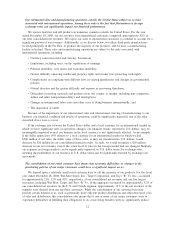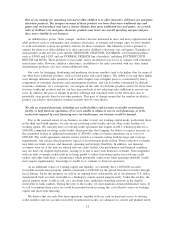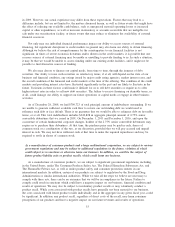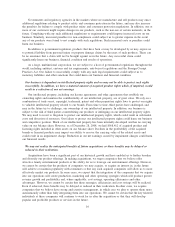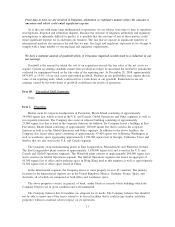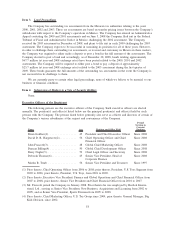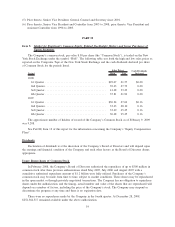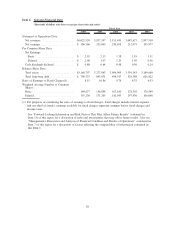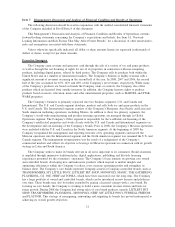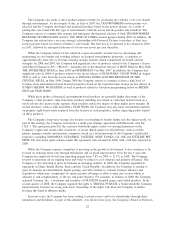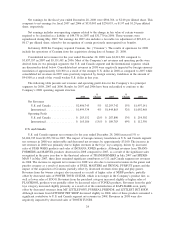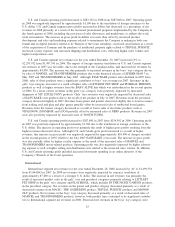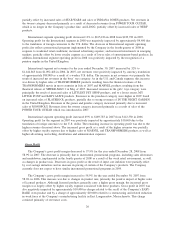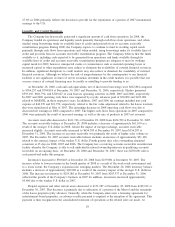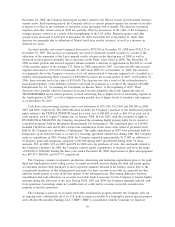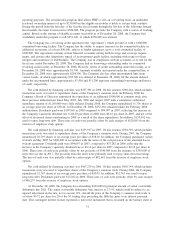Hasbro 2008 Annual Report Download - page 31
Download and view the complete annual report
Please find page 31 of the 2008 Hasbro annual report below. You can navigate through the pages in the report by either clicking on the pages listed below, or by using the keyword search tool below to find specific information within the annual report.
Item 7. Management’s Discussion and Analysis of Financial Condition and Results of Operations
The following discussion should be read in conjunction with the audited consolidated financial statements
of the Company included in Part II Item 8 of this document.
This Management’s Discussion and Analysis of Financial Condition and Results of Operations contains
forward-looking statements concerning the Company’s expectations and beliefs. See Item 1A “Forward-
Looking Information and Risk Factors That May Affect Future Results” for a discussion of other uncertainties,
risks and assumptions associated with these statements.
Unless otherwise specifically indicated, all dollar or share amounts herein are expressed in thousands of
dollars or shares, except for per share amounts.
Executive Summary
The Company earns revenue and generates cash through the sale of a variety of toy and game products,
as well as through the out-licensing of rights for use of its properties in connection with non-competing
products, including digital games, offered by third parties. The Company sells its products both within the
United States and in a number of international markets. The Company’s business is highly seasonal with a
significant amount of revenues occurring in the second half of the year. In 2008, 2007 and 2006, the second
half of the year accounted for 63%, 66% and 68% of the Company’s net revenues, respectively. While many
of the Company’s products are based on brands the Company owns or controls, the Company also offers
products which are licensed from outside inventors. In addition, the Company licenses rights to produce
products based on movie, television, music and other entertainment properties, such as MARVEL and STAR
WARS properties.
The Company’s business is primarily separated into two business segments, U.S. and Canada and
International. The U.S. and Canada segment develops, markets and sells both toy and game products in the
U.S. and Canada. The International segment consists of the Company’s European, Asia Pacific and Latin and
South American marketing operations, including Mexico. In addition to these two primary segments, the
Company’s world-wide manufacturing and product sourcing operations are managed through its Global
Operations segment. The Company’s Other segment is responsible for the worldwide out-licensing of the
Company’s intellectual properties and works closely with the U.S. and Canada and International segments on
the development and out-licensing of the Company’s brands. Prior to 2008, the Company’s Mexican operations
were included with the U.S. and Canada in the North American segment. At the beginning of 2008 the
Company reorganized the management and reporting structure of its operating segments and moved the
Mexican operations into the International segment and the North American segment was renamed the U.S. and
Canada segment. The management reorganization was the result of a realignment of the Company’s
commercial markets and reflects its objective to leverage its Mexican operations in connection with its growth
strategy in Latin and South America.
The Company seeks to make its brands relevant in all areas important to its consumers. Brand awareness
is amplified through immersive traditional play, digital applications, publishing and lifestyle licensing
experiences presented for the consumers’ enjoyment. The Company’s focus remains on growing core owned
and controlled brands, developing new and innovative products which respond to market insights and
optimizing efficiencies within the Company to reduce costs, increase operating profits and strengthen its
balance sheet. The Company’s core brands represent Company-owned or Company-controlled brands, such as
TRANSFORMERS, MY LITTLE PONY, LITTLEST PET SHOP, MONOPOLY, MAGIC: THE GATHERING,
PLAYSKOOL, G.I. JOE, NERF and TONKA, which have been successful over the long term. The Company
has a large portfolio of owned and controlled brands, which can be introduced in new formats and platforms
over time. These brands may also be further extended by pairing a licensed concept with a core brand. By
focusing on core brands, the Company is working to build a more consistent revenue stream and basis for
future growth. During 2008 the Company had strong sales of core brand products, namely LITTLEST PET
SHOP, TRANSFORMERS, PLAYSKOOL, MONOPOLY, NERF, MY LITTLE PONY, FURREAL FRIENDS
and PLAY-DOH. This strategy of reimagining, reinventing and reigniting its brands has proved instrumental to
achieving its overall growth objectives.
21



